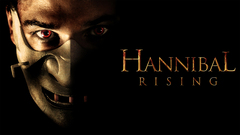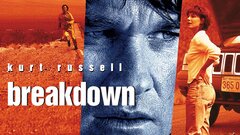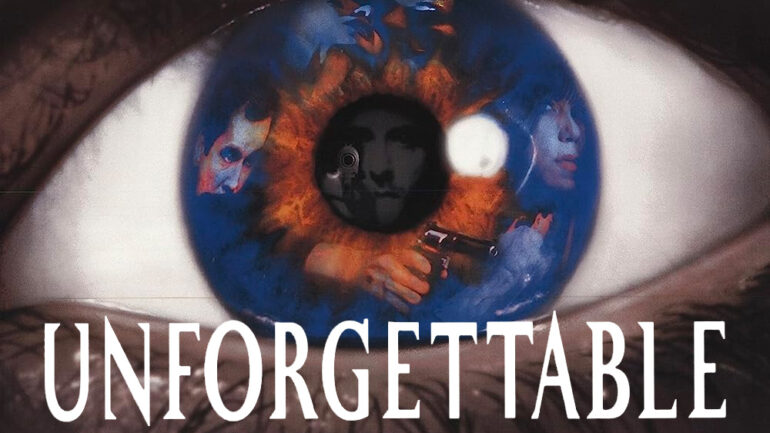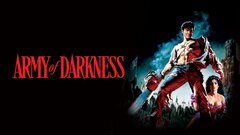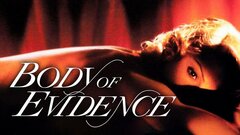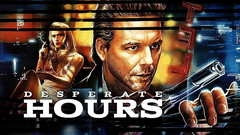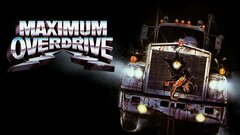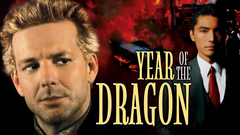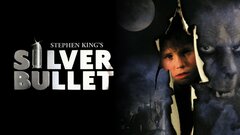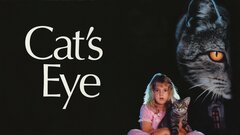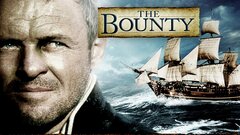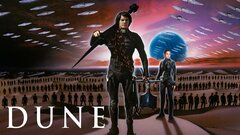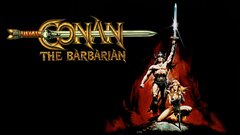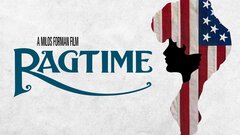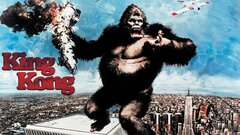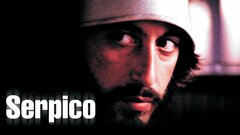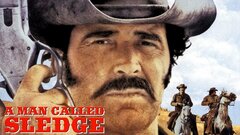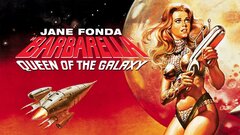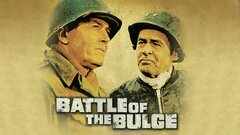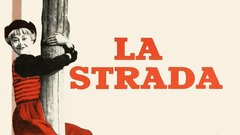A Hollywood player for decades, producer Dino De Laurentiis produced a remarkable mix of motion pictures, ranging from art house fare like Fellini's "La Strada" (1954) to camp classics like "Barbarella" (1968) to spectacles like "King Kong" (1976) and "Tai Pan" (1986), as well as popular entertainment like "Hannibal" (2001). Ever since he began his producing career with the international hit "Riso Amaro" ("Bitter Rice") (1948), De Laurentiis financed, produced or distributed hundreds of movies, including some of the most significant ever made in cinema history, like "Serpico" (1973), "Death Wish" (1974) and "Conan the Barbarian" (1982).
Toward the end of the 20th century, De Laurentiis - who had missed out on the massive success of "Silence of the Lambs (1991) after declining the rights following the failure of "Manhunter" (1986) - saw a resurgence with the box office hit "Hannibal" (2001), which spawned another successful sequel, "Red Dragon" (2002), and cemented his place as one of cinema's most prolific producers.
Born on Aug. 8, 1918 in Torre Annunciata, Italy, a small city in the province of Naples, De Laurentiis was raised by his father, Rosario, a pasta maker, and his mother, Giusppina. Though he entered his father's pasta business while still a teenager, De Laurentiis found the idea of selling spaghetti unappealing and instead moved to Rome, where he enrolled in the Centro Sperimentale di Cinematografia. De Laurentiis supported himself with acting roles and behind the scenes work until he decided to become a producer in 1939, making his producing debut with "Troppo tardi t'ho conosciuta."
But it took another nine years before he enjoyed a real international success with the neo-realistic "Riso Amaro" ("Bitter Rice") (1948), one of the landmark films in the Italian neorealist movement that emerged after World War II. The film starred a buxom Silvana Mangano, whom De Laurentiis married in July 1949, as a rice field worker wooed by two men; one respectable (Raf Vallone) and the other a fugitive (Vittorio Gassman). The couple collaborated in several more ensuing films, including "Il Lupo della Sila" ("The Lure of Sila") (1949), "Il Brigante Musolino" ("Outlaw Girl") (1950) and "Anna" (1951).
In the 1950s, De Laurentiis joined with Sophia Loren's husband Carlo Ponti to form a production company that oversaw several prestigious Italian films, including Federico Fellini's Oscar-winning melodrama set in the seedy world of a travelling carnival, "La Strada" (1954). They went on to make "Attila" (1955), "The Miller's Wife" (1955) and "Guendalina" (1957) before dissolving their partnership.
By that time, De Laurentiis had branched out on his own, overseeing the epic "War and Peace" (1956), directed by King Vidor and starring Audrey Hepburn and Henry Fonda, while reuniting with Fellini on the Oscar-winning "The Nights of Cabiria" (1957). In 1959, De Laurentiis oversaw his third Academy Award-nominated foreign language motion picture, "The Great War."
Meanwhile, as the 1960s unfolded, De Laurentiis built his own studio, Dino Citta, and began teaming with some of the European cinema's finest filmmakers like Vittorio De Sica on "The Last Judgment" (1962), Jean-Luc Godard on "Pierre le fou" (1965) and Claude Chabrol on "An Orchid for the Tiger" (1965). He also worked the Hollywood scene with films like the religious-themed dramas "Barrabas" (1962) and the John Huston-directed "The Bible" (1966). This combination of art house and commercial fare reached absurd heights in 1968 with the odd combination of Francois Truffaut's "The Bride Wore Black" and Roger Vadim's "Barbarella".
When Dino Citta failed, De Laurentiis relocated to the United States in the early 1970s and initiated a run of films that proved popular at the box office. He was producer of "The Valachi Papers" (1972), which was based on fact and purported to tell the real story of the Italian Mafia that a film like "The Godfather" was unable to do. Meanwhile, "Serpico" (1973) garnered praise for its true-life tale of police corruption as well as for Al Pacino's magnificent portrayal as an idealistic young cop in jeopardy for not taking bribes. He followed with "Death Wish" (1974), which perhaps tapped most into the zeitgeist, serving up a revenge tale that spawned several sequels starring Charles Bronson and countless imitations.
While the spy thriller "Three Days of the Condor" (1975) combined the elements of pulp entertainment with highbrow aspirations embodied in star Robert Redford and director Sydney Pollack, De Laurentiis waded in the muck with lowbrow entertainment like the dreadful "Mandingo" (1975) and the more noisome sequel "Drum" (1976).
Perhaps the producer's greatest act of hubris was undertaking the remake of the 1933 classic "King Kong" (1976), which he hoped would rival "Jaws" (1975) in terms of box office take. Famously declaring that "When Jaws dies, nobody cries. When Kong dies, they all cry," De Laurentiis instead delivered a campy, low-brow effort full off cheesy dialogue and over-the-top performances from Jessica Lange, Jeff Bridges and Charles Grodin. Not losing his flair for the high-brow, De Laurentiis reteamed with Fellini one last time for "Fellini's Casanova" (1976), the director's ill-fated biopic of the great lover (Donald Sutherland).
After producing Ingmar Bergman's venture into English-language filmmaking, "The Serpent's Egg" (1978), he produced "The Great Train Robbery" (1979) and "Flash Gordon" (1980) while delivering an intriguing adaptation of E.L. Doctorow's historical novel, "Ragtime" (1981), directed by Milos Forman. Meanwhile, he helped introduce the world to Arnold Schwarzenegger by producing "Conan the Barbarian" (1982), which later spawned a sequel "Conant the Destroyer" (1984) and an off-shoot, "Red Sonja" (1985).
Amid much fanfare in 1983, De Laurentiis announced the formation of the De Laurentiis Entertainment Group (DEG), which included a state-of-the-art film studio in Wilmington, NC. Serving as chairman and CEO, he oversaw an ambitious slate of films, most of which proved to be box office disappointments. Despite the presence of stars Anthony Hopkins and Mel Gibson, "The Bounty" (1984), a retelling of the famous mutiny, failed to find an audience.
Most disappointing of all was "Dune" (1984), director David Lynch's wildly ambitious and overly muddled distillation of Frank Herbert's classic sci-fi novel, which proved to be both an expensive failure and a frustrating mess for audiences. After the failures of projects like "Year of the Dragon" (1985) and "Tai Pan" (1986), De Laurentiis ceded defeat and resigned from DEG in 1988, while the following year, he lost his wife, Silvana Mangano, to lung cancer.
Perhaps a lesser figure would have been driven from the industry, but the formidable De Laurentiis formed Dino De Laurentiis Communications and produced the remake of "The Desperate Hours" (1990). Following his first foray into American television, "Stephen King's 'Sometimes They Come Back'" (CBS, 1991), he returned to features as the executive producer of "Kuffs" (1992) while signing Madonna to star in "Body of Evidence" (1993), a "Basic Instinct"-inspired knockoff.
Returning to the small screen, De Laurentiis returned to the biblically-inspired films of the 1960s and oversaw a remake of "Solomon and Sheba" (Showtime, 1995) which starred Jimmy Smits as the biblical ruler of Israel and Halle Berry as the Queen of Sheba. Also that year, he steered the television movie depicting the biblical Joseph (Adrian Pasdar) and his rise out of slavery to become the chief minister to the Pharaoh of Egypt (Orso Maria Guerrini) in the oddly-titled "Slave of Dreams" (Showtime, 1995). Although the Ray Liotta thriller "Unforgettable" (1996) was anything but, De Laurentiis enjoyed a critical hit with "Breakdown" (1997), a taut thriller starring Kurt Russell as a husband looking for his wife's kidnapper after a breakdown in the middle of Nowhere, New Mexico. As the years piled on, De Laurentiis slowed down his output, though he did remain active while receiving the Irving G. Thalberg Award from the Academy of Motion Picture Arts and Sciences in 2001.
Following the underwhelming World War II yarn "U-571" (2000), De Laurentiis brought "Hannibal" (2001) - the long-awaited sequel to "The Silence of the Lambs" (1991) - to the screen. Previously, his company held the rights to Thomas Harris' novels and was behind the Michael Mann-helmed "Manhunter" (1986). But the financial wreckage left behind from that box office failure forced the company to pass on "Lambs," only to see Orion Pictures make a huge hit that won multiple Oscars. Determined to not let such an opportunity pass him by again, De Laurentiis at long last managed to convince Anthony Hopkins to reprise Dr. Hannibal Lecter despite "Lambs" star Jodie Foster and director Jonathan Demme declining to participate. With Julianne Moore as Clarice Starling and Ridley Scott in the director's chair, De Laurentiis finally brought the picture to screen. Though a huge box office hit - the film earned $58 million its opening weekend - "Hannibal" received mix reviews at best and zero Oscar nominations. De Laurentiis went back to the well with "Red Dragon" (2002), a remake of "Manhunter" starring Hopkins and Edward Norton.
Several years later, he produced "Hannibal Rising" (2007), a prequel that saw the rise of Hannibal Lecter (Gaspard Ulliel) as a notorious serial killer. The film was savaged by critics on its way to becoming a box office dud. Although his final project was not a major success, De Laurentiis left behind a sweeping legacy of producing quality films, as well as sharing his unrequited love of the art form itself with the rest of the world. De Laurentiis passed away on Nov. 10, 2010 in his Beverly Hills home, surrounded by loved ones. He was 91 years old.



